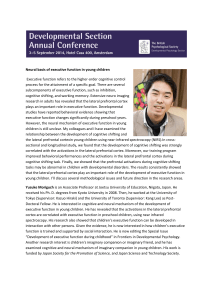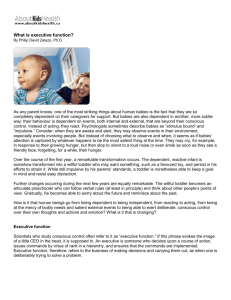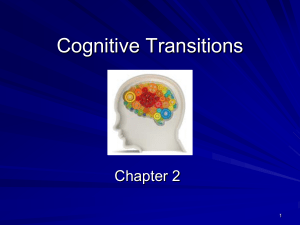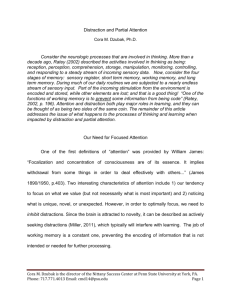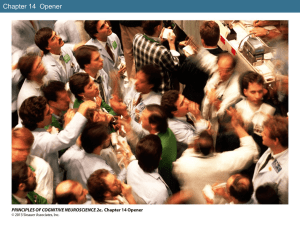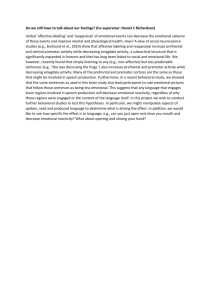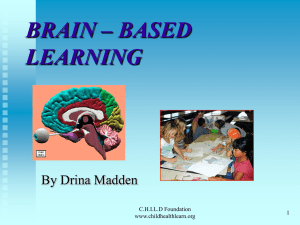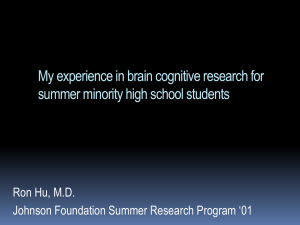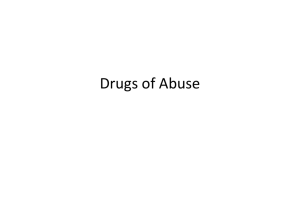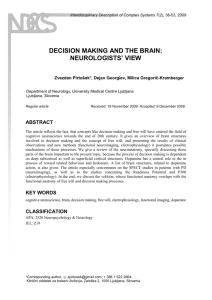here
advertisement
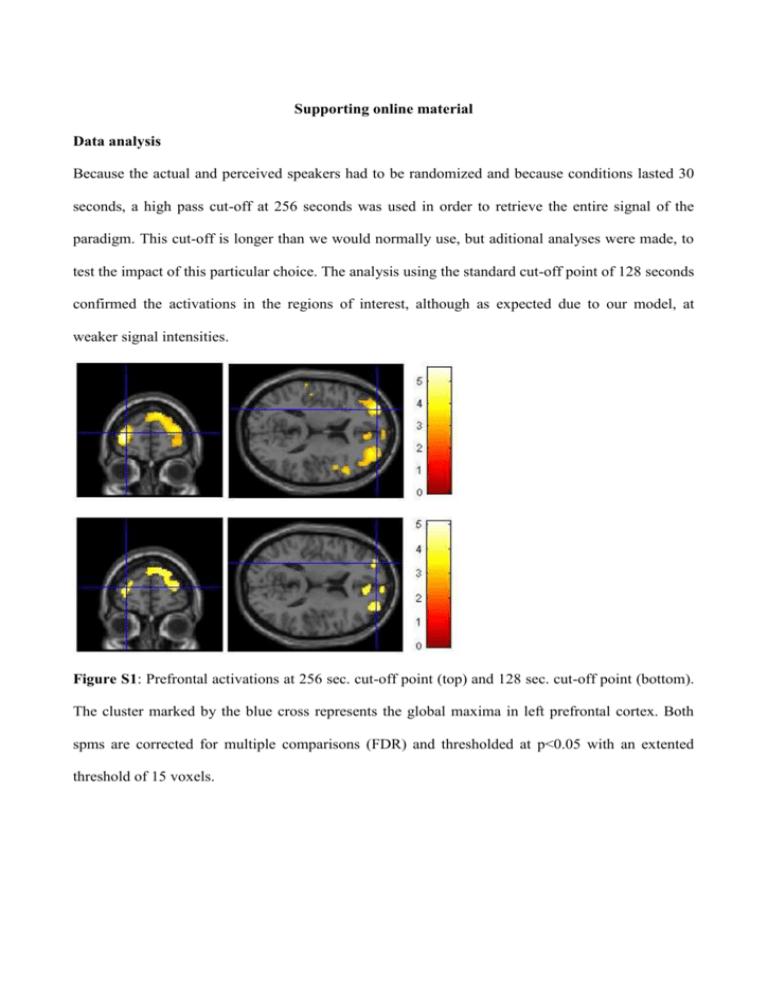
Supporting online material Data analysis Because the actual and perceived speakers had to be randomized and because conditions lasted 30 seconds, a high pass cut-off at 256 seconds was used in order to retrieve the entire signal of the paradigm. This cut-off is longer than we would normally use, but aditional analyses were made, to test the impact of this particular choice. The analysis using the standard cut-off point of 128 seconds confirmed the activations in the regions of interest, although as expected due to our model, at weaker signal intensities. Figure S1: Prefrontal activations at 256 sec. cut-off point (top) and 128 sec. cut-off point (bottom). The cluster marked by the blue cross represents the global maxima in left prefrontal cortex. Both spms are corrected for multiple comparisons (FDR) and thresholded at p<0.05 with an extented threshold of 15 voxels. Between-groups analysis We performed a direct between-groups comparison in a simple two-sample t-test masked with the activations from an F test of any differences (Friston et al., 2006) to determine whether the BOLD response interacted with cultural background. Results confirmed a significant difference of neural activation between groups in the temporoparietal junction, the dorsolateral prefrontal cortex, the medial prefrontal cortex, and the lateral orbitofrontal region (Fig. S2 and Table S1). Figure S2: Table S1: mni coordinates of activations in a two-sample t-test masked with the activations from an F test of any differences (Friston et al., 2006). Anatomical Region Cluster size (Brodmann areas) (functional voxels) x y z Z-value 636 56 -40 42 4.15 444 44 30 38 3.70 53 40 42 2 3.67 107 0 24 62 3.53 33 2 42 56 3.15 46 32 54 14 3.15 57 32 24 -10 2.98 Non-Christian vs. Christian known for his healing powers Temporoparietal junction (BA 39/40) Dorsolateral prefrontal cortex (BA 9) Prefrontal cortex (BA 46) Dorsomedial prefrontal cortex (BA 6) Medial prefrontal cortex (BA 8) Anterior prefrontal cortex (BA 10) Lateral orbitofrontal region (BA 47) Region/cluster size/mni coordinates of local maxima (x,y,z)/Z-value. Results are thresholded at p<0.05 FDR-corrected with Zvalue> 3.00 and with an extented threshold of 15 voxels. BOLD response in peak voxels of the five global maxima and charisma ratings in secular group: The figure below (Fig. S3) shows the effect of listening to the praying speakers (Y-axis) as a function of subsequent ratings of the speakers' charisma on a scale from 1-10 (X-axis). The black line corresponds to the average of fitted slopes from the individual participants (numbers encircled and coloured). None of the regions had a significant slope in a one-sample t-test across subjectspecific slopes (p<0.05). Figure S3 BOLD response in peak voxels of the five global maxima and God’s presence in Christian group: The figure below (Fig. S4) shows the effect of listening to the praying speakers (Y-axis) as a function of subsequent ratings of God’s presence during prayers on a scale from 1-10 (X-axis). The black line corresponds to the average of fitted slopes from the individual participants (numbers encircled and coloured). A one-sample t-test across subject-specific slopes showed a significant effect for the inferior temporal cortex, the temporopolar/orbitofrontal regions, and the cerebellum (p<0.05). Figure S4 Relationship between the Christian participants’ ratings of speaker’s charisma and God’s presence. Figure S5 Stimuli All eighteen prayers were written by a devoted Christian woman who belonged to a charismatic church. They all focus on the physiological and mental health of the person lying in the scanner. Examples of prayers: Jesus Christ our Lord and saviour, You who created all things in your goodness Please see to the person who receives this prayer with your love and mercy. Please let your mercy and rich blessing enter this person and bring healing to his life, to the body, the mind and the soul. For your goodness and love. Amen Heavenly father, By your goodness and mercy, bless the person who hears these words and in the heart receives them and believe in them. Bring strength and health to the body and the soul and the spirit. Be near this person with your love and let your goodness rule from now to eternity. Amen The ‘secular’ prayers use the same structure as their religious counterparts, but include no religious terminology. Example of secular counterpart: Dear Mr. Smith You who are capable of helping us and who care for us and stand up for us. Please help the person who hears these words and trusts in them. Please use your energy and help him now as well as in the future. Be kind and support and protect the person against all problems. Thank you. All participants were asked to briefly read short statements by the ‘perceived speakers’ prior to scanning, which indicated the speakers’ religious status: Examples: Non-Christian: “Yes I know about intercessory prayer, but I don’t see the point. I can read the prayers aloud as if I believe in them, but I am confident that there is no God who reacts to them” Christian: “Yes, I am confident that God exists. I just know he does. When I pray I can feel his presence, and he always helps you if you ask”. Christian known for his healing powers: “God has always used me to pray for persons in need – ever since I was a kid. I remember the first time I prayed for a stranger in my childhood church. He said he had never felt God’s presence before and that his pain in the knee had disappeared”.
